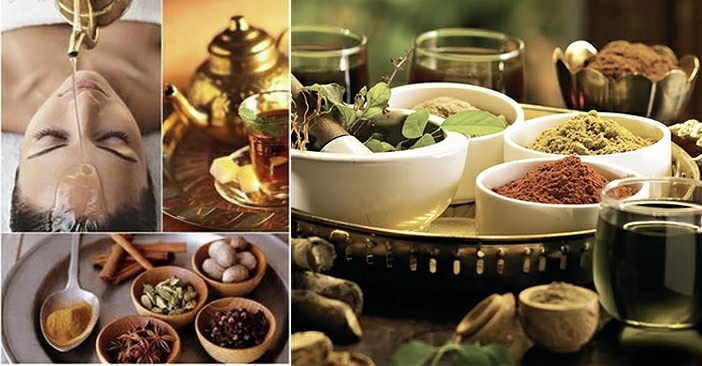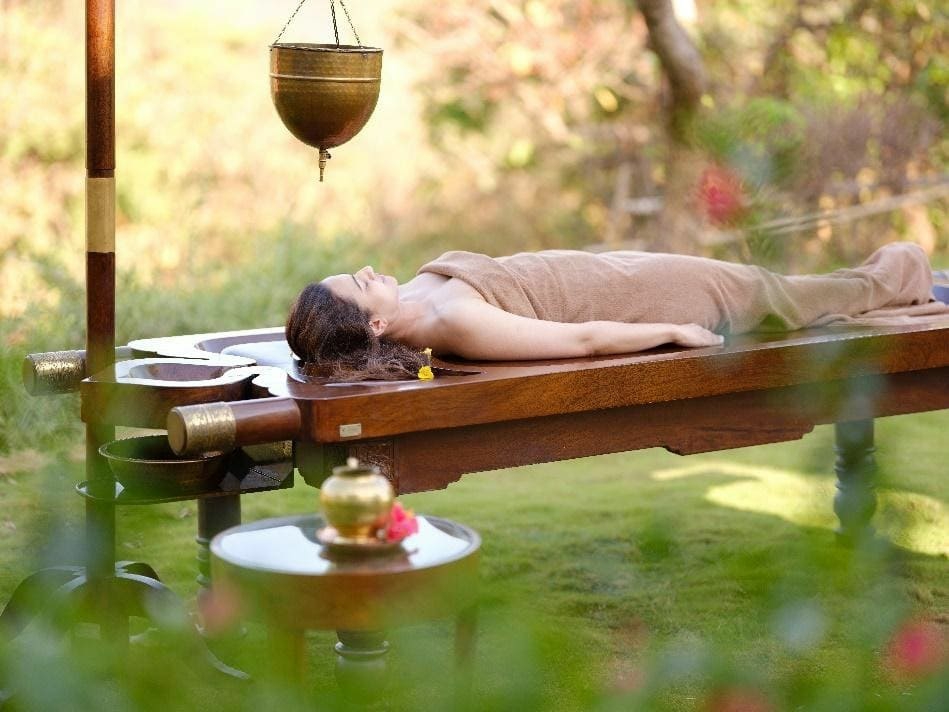Ayurveda is the traditional medical system of India. Ayurveda is a complex and holistic medical system. It includes treatments with herbs, herbal formulations, bhasmas, panchakarma treatment for physical, mental and spiritual well-being.
What is Panchakarma?
Panchakarma is an elaborate method that combines multiple treatments, whose main aim is to eliminate the toxic waste as well as the elimination of toxins that have entered the body from outside such as pesticides, heavy metals etc.

Ayurvedic Panchakarma treatment constitutes about 60-70% of preventive and curative Ayurvedic treatment. Starting from the preventive relaxation therapy, to a serious disease treatment, Panchakarma therapy is quite popular because it is a sure shot way to restore the Dosha balance very quickly.
Panchakarma procedures are not all about Ayurvedic massage. Ayurvedic massage is only a part of preparation procedure.
In which Ayurvedic text practice of Panchakarma is mentioned and how old is the procedure?
The practice of Panchakarma is mentioned in Charak Samhita and Sushrut Samhita. This procedure is 5,000 years old.
What is Panchakarma used for?
Panchakarma is used for detoxification, rejuvenation, relaxation, for chronic ailments, to decrease the biological age etc.
- This practice is also good for arthritis, skin problems, accumulation of bad cholesterol, allergies, migraine, hypertension etc.
How does Panchakarma work?
Panchakarma works on the tissue level. There are seven tissues in the body. These are – plasma, blood, muscle, fat, bone, bone marrow and sperm/ovum.
- The toxins in the body are soluble in the fat and in the water but these are deeply rooted in all the seven tissues. Panchakarma procedures work on the tissue level.
- The toxins can be accumulated through external oleation such as Abhyanga (massage) treatment, purgation and enemas like herbal decoction enema and through inhalation therapy like nasya (oil administration through nasal passage).
- According to Charak Samhita, Ayurvedic enema – Basti is the central part of Panchakarma due to the good absorption into the physiology through the largest absorption area – the intestines.
How many times a year should one undergo Panchakarma?
A healthy individual should undergo a 5- day purification every seasonal change and a diseased person can go intense panchakarma twice a year.
Why Spring season is considered a good time to do Panchakarma?
Spring is the best season for Panchakarma because in the spring season, budding starts and the fresh leaves grow. It indicates that all the old things are lost and nature is giving birth to freshness and new lives. In the same way, every individual feels energetic with the new flowering and blossoming in the nature which gives new energy levels in the body. That’s why, spring is the best time to letting go old toxins that are accumulated within the system. Therefore, climatic conditions are also favourable because of the presence of energy in the nature.
What are the benefits of Panchakarma for healthy people?
- Panchakarma procedures balance Vata, Pitta and Kapha doshas in a healthy person.
- It improves immunity, helps in rejuvenation at cellular level, reduces extra fat, provides strength to the nervous system, improves blood circulation, improves digestion, increases joint mobility, improves skin texture, helps to restore metabolic power, strengthens tissues, reduces stress etc.

Are there conditions under which Panchakarma is not advised? Is it suitable for everyone?
- Panchakarma shouldn’t be done during menstruation, pregnancy and lactation in females.
- People suffering from debilitating disorders such as HIV should also avoid it.
- It is also not recommended for people suffering from tuberculosis, emaciation, cancer of lungs and testicles, active infections etc.
Can children also undergo the procedure?
Yes, children above the age of 12 years can undergo panchakarma. Younger children can undergo some of the panchakarma procedures such as Abhyanga, Shirodhara, Pindsweda and Padhabhyanga.
Why there is a need of Panchakarma in today’s world?
Today’s quality of food and dietary habits, lifestyle and changes in seasons are often the cause of saturation of toxins in the body, which according to Ayurveda are Ama and Malas. These are considered responsible for the vitiation of the doshas. Unless and until the body becomes free from this Mala and Ama, the health cannot be achieved.
Ayurveda has the best treatment in the form of Panchakarma to make the body free from these disease- causing factors.
Disclaimer:-
This article is not a substitute to the standard Medical Diagnosis or personalized Ayurvedic Treatment! It is intended only for Information!
For experts consultation, please write us at care@blessayurveda.com.
2,412 total views, 1 views today